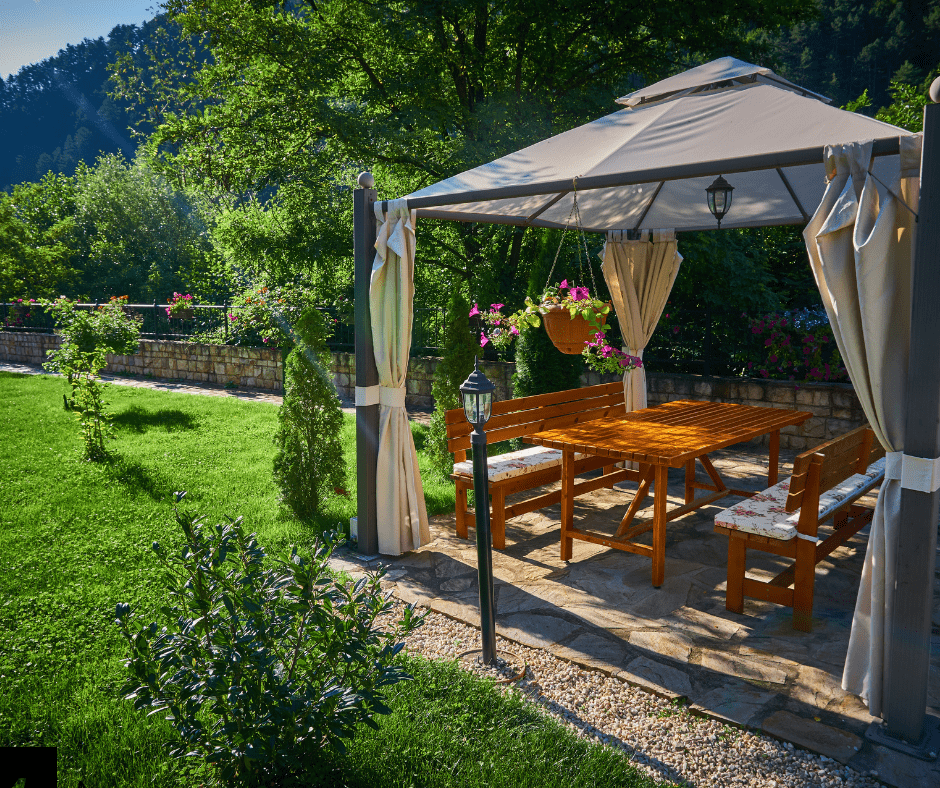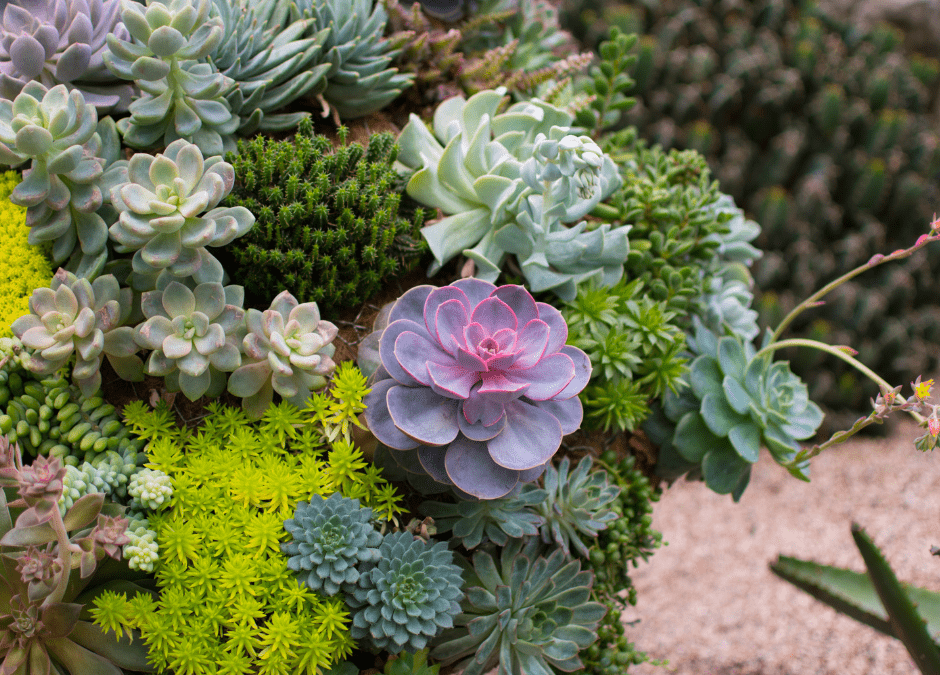For Phoenix residents, July is at the apex of heat and desire to stay cozied up in the a/c. The sweltering temperatures even the natives sweat. However, if you have a green thumb (or try to) and want to keep your garden oasis in tip-top shape this July, have no fear.
You can have an amazing summer desert garden oasis. Using these pointers, you can beat the hot July heat without losing your plants.. In this guide, we’ll examine how to maintain a vibrant desert landscape that will be the envy of all.
1. Hydration, Hydration, Hydration
No desert oasis can even begin to thrive without proper hydration. It is essential for the health and well-being of your plans. The dry desert heat makes hydration a critical factor for success. Therefore, you must be diligent when it comes to watering your plant life. Since July comes with scorching heat, it is best to water your plants early in the morning. This allows your plants to take a big drink before the sun has a chance to evaporate moisture quickly.
If you can, consider installing a drip irrigation system or soaker hoses. These systems can deliver water directly to the roots of your plants, ensuring that hydration reaches them quickly and efficiently. In addition, adding a layer of organic mulch to surround your plants can be helpful. Mulch is helpful in that it will retain moisture in the soil, limit weed growth, and regulate proper soil temperatures in the summer.
2. Opt for Heat-Resistant Plants
When choosing plants for your garden, you want to opt for species that are well-adapted to the desert climate of Phoenix. Plants that can withstand intense heat and summer rays are the best choice. Some examples include desert marigolds, lantanas, agaves and even a basil plant (an excellent herb) that will do well in the hot heat of Phoenix. Most of these plants will add great visual color and texture to your backyard retreat. These types of plants require minimal maintenance. They are definitely equipped to thrive in the harsh desert conditions.
3. Attempt Xeriscaping Principles for Sustainable Landscaping
A route to consider for your rural Phoenix landscape is a technique called xeriscaping. This method is a holistic approach that efficiently waters your plants while being mindful of the environment. It is a perfect approach for a desert oasis in the arid Phoenix climate. By choosing to incorporate xeriscaping into your garden, you can maintain a resilient and beautiful garden.
Here are some key principles and tips:
- Plant Selection: As mentioned above, choosing native and well-adapted plants is important for being mindful of water consumption. The local climate and soil conditions matter here. Plants requiring minimal water are a good choice for xeriscaping concepts.
- Water Conservation: Saving water is important for your environment and will also help your budget. Drip irrigation and soaker hoses can help keep costs down while being extremely efficient with the amount of water you use in your garden. Adding mulch to your garden will contribute to this efficiency as well. Furthermore, adding features like rain gardens, bioswales or permeable paving can use rainwater runoff to your advantage.
- Soil Health: The health of your soil will also aid in xeriscaping attempts. You can make the soil even healthier by adding compost or aged manure. This will promote improved soil structures, fertility, and moisture retention. You will notice the added bonus of more robust and healthy-appearing plants.
- Efficient Design: If you design with conservation in mind, you can also have a big win. One method is to group together plants with similar water needs, sun exposure or soil types. At the same time, consider limiting the use of turf grass as this requires more watering.
- Smart Maintenance: Take a savvy approach to caring for your garden. Stay on top of pest control, pruning, and weeding to display a lush and thriving sanctuary. Stay alert to your plants’ well-being and be on the lookout for indications of stress, illness, and pests. Tackling these problems promptly will help minimize harm.
4. Provide Shade and Shelter
There is no doubt that July is full of scorching heat that takes its toll on plants. If possible, add some shade and shelter for your garden. Some ideas include pergolas, arbors or shade sails to protect the most vulnerable of your plants. Taking the sun off of your plants during the hottest part of the day is a good idea. You may even consider planting some heat-tolerant shrubs or trees to add some natural shade to your garden. These additions can add that extra touch of superior design to your garden.

5. Mulch and Compost for Soil Health
Soil health is a major component of a thriving garden. It provides essential nutrients for your plants to grow. High-quality soil also retains moisture to ensure your plants get enough to drink. Again, as stated above, using mulch to layer around your plants can also improve soil, fertility and moisture retention. Add in a little compost, and you have the perfect potion for a beautiful summer garden. The summer heat will have no chance at ruining your hard work!
Final Thoughts on Thriving Landscapes in Rural Phoenix
Maintaining a lush desert garden in rural Phoenix isn’t as daunting as it seems. With these tips and tricks, you can nurture a beautiful oasis right in your backyard. While keeping your plants hydrated can pose a challenge, it doesn’t have to spell doom for your summer garden. By selecting drought-resistant plants, watering them appropriately, and enriching the soil with mulch and nutrients, you can create the ideal conditions for your garden to thrive.

